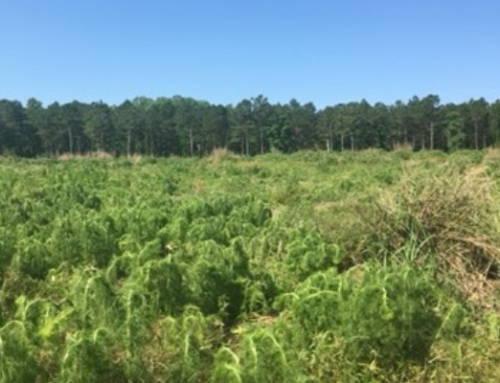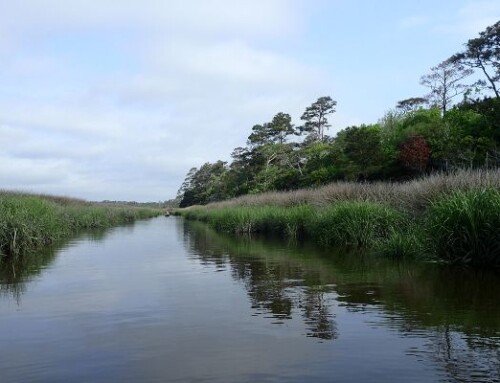“What happens after a piece of land is protected?” is one of the most common questions we get. Over the next few editions of the Coastlines newsletter, we will be showcasing some of the core work involved in being good stewards of the lands we protect and hold as preserves.
Today, we are taking a brief look at one of the most challenging land management tasks we undertake – the eradication of invasive or non-native species. Wisteria (Wisteria spp.), Chinese Privet (Ligustrum sinense), a non-native subspecies of the Common Reed (Phragmites spp.), and English Ivy (Hedera helix) are just a few of the invasive plants that NCCLT is working to eliminate from some of our preserves.
Wisteria is an aggressive climbing, woody vine native to East Asia that was introduced to the eastern U.S. in the mid/late 19th century through the early 20th century as a decorative ornamental and remains popular in the nursery trade. Wisteria vines grow upward and often tightly constrict a host tree causing death by girdling. Once established, Wisteria requires a rigorous eradication strategy and often many years of consecutive removal efforts. For mature vines, a combination of cutting and chemical treatments is the most effective method for removal.
That strategy is exactly what has been employed at our Island Creek Preserve in Jones County. The eastern side of the property features an 8-10 acre open area that had become choked with Wisteria. In the spring of 2020, we began to work with a contractor to cut and spray the area along with vines that were moving into the surrounding forest. This effort continues today, with regular cutting and spot spraying of any new vine growth. As you can see in the photos, the difference is dramatic, but the work continues.
In addition to removing invasive species on our preserves, we are committed to documenting the occurrences and alerting landowners to their presence on any of the privately-owned lands with conservation easements that we hold and/or monitor.
We would like to express our gratitude to the U.S. Fish and Wildlife Service, Audubon North Carolina, Brad and Shelli Stanback, and Alan Craig for funding assistance with our Wisteria eradication efforts to date.






